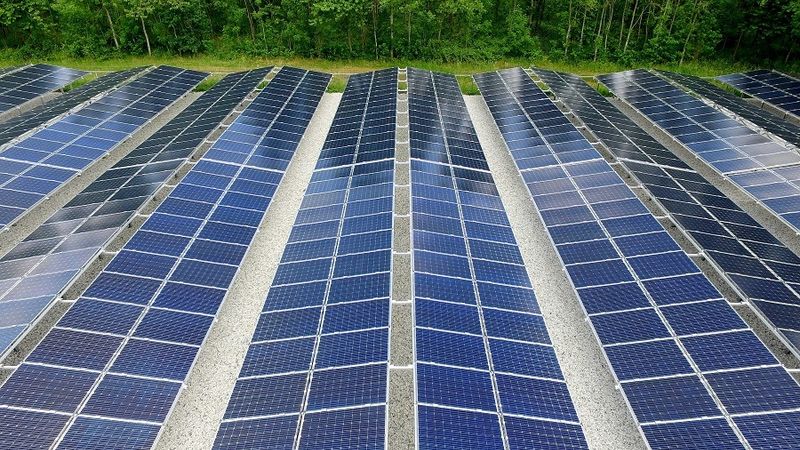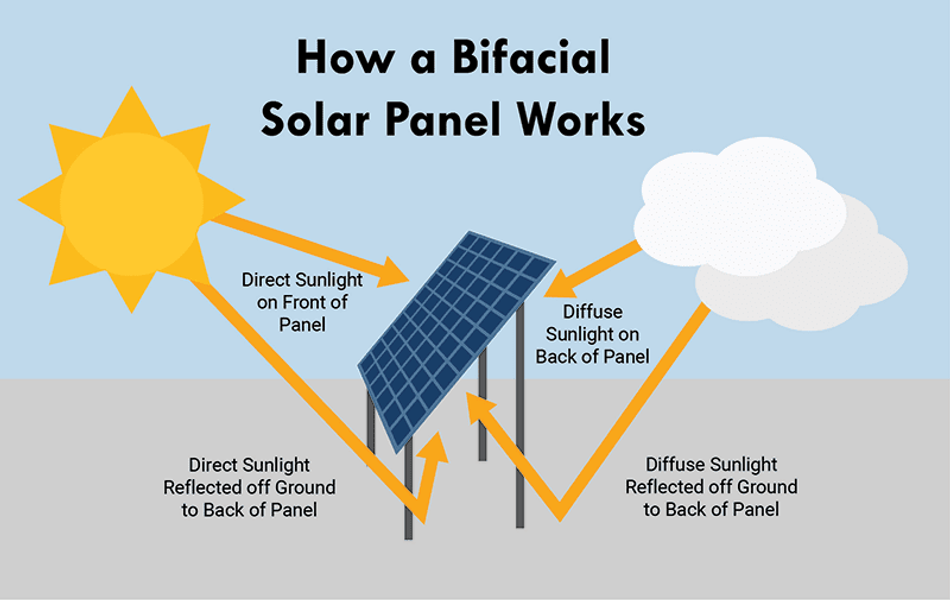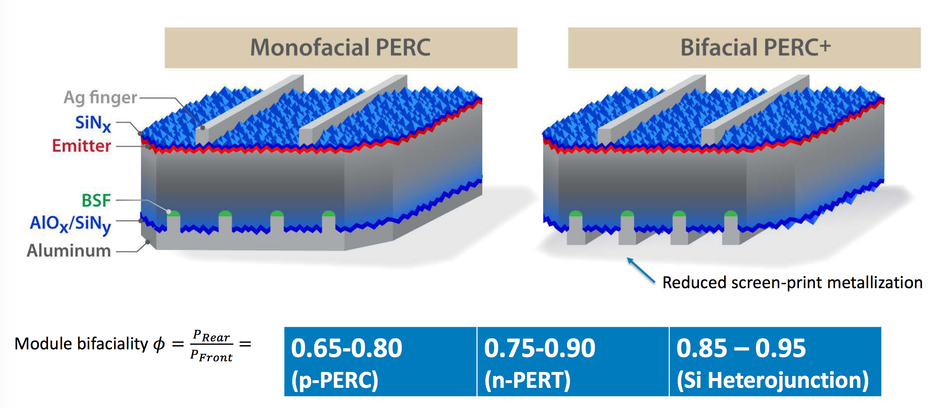Solar Energy Efficiency: Dominant Bifacial Solar Panel Technologies
Bifacial solar panels are capable of converting rays of sunshine into energy from both their front and rear-sides. This leads to higher energy efficiency and greater energy production.

Image courtesy of Tempress.
The clean energy transition has only been gaining momentum in order to meet the growing energy demands all over the world. In particular, the usage of solar technology has become more popular due to its shrinking levelized cost of energy (LCOE) over the last decade. There have been many research studies on increasing the efficiency of solar PV modules. Bifacial solar technology has been a proven way to achieve a higher energy yield. This has led to an uprise in the deployment of bifacial modules in the solar sector.
This concept is not particularly a new phenomenon as in essence all solar cells are bifacial when uncoated on both sides. However, due to uncertain performance prediction and lack of optimum installation options, this technology has not been commonly used until the last few years. Historically, monofacial cells have been the dominant solar cell technology. These cells are coated on the rear side with material such as aluminium (AKA aluminium back-surface field/ Al-BSF), which prevents light from reaching the back side of the cell. Before diving into the dominant existing bifacial solar panel technologies, it’s important to understand what bifacial coefficient is. This parameter helps with gaining a better grasp of the differences between these technologies.
What is the bifacial coefficient?
Since bifacial solar panels can convert rays of sunshine to electricity from both sides, they account for a greater energy yield. However, the cell layout is not symmetrical on both sides and thus it reacts differently to the light hitting its front and rear-side, which forms the foundation of Bifaciality Factor or Bifacial Coefficient. This concept is measured as the ratio of the nominal efficiency at the rear side of the cell, with respect to the nominal efficiency of its front side. A high bifacility factor helps get the maximum benefits of deploying this solar cell technology. There are a number of factors that impact the bifacial coefficient, including:
- Irradiance on the ground
- Irradiance on the rear-side
- Reflected irradiance on the front side
- Tracking systems
The additional energy yield of solar bifacial panels (AKA bifacial gain) predominantly comes from the reflected light on the rear-side, which is the irradiance received by the ground times the albedo factor (the surface reflectivity of the ground under the array). The amount of shading also determines the available surface of the rear side of the panel, meaning that any element that impacts shading i.e. height and tilt of the array, mounting system design, cable management, etc. will inevitably also impact the bifacial efficiency gain. Overall, the most important factor shaping the bifacial efficiency gain by far is the ground albedo- aka whiteness- which is de ned as the ratio of the diffuse re ection of solar radiation to the global radiation. Albedo is dimensionless and expressed as a number between 0 and 1, where 0 represents total absorption and 1 total reflection.
Moving onto the cell technology itself, different solar cell technologies impact the bifacial properties differently. Bifacial solar cells can be categorized based on the number of junctions and fall into the following three categories.
What are the dominant existing cell technologies?
1. p-PERC: This cell technology has swiftly dominated the industry. There are only a small number of changes needed in the manufacturing process in order to make p-PERC “bifacial ready”. However, the bifacial coefficient seems to be more limited in this type of solar cell as the cell still needs to be imprinted with a thin grid of aluminium on the back side. This helps increase the cell’s efficiency by acting as an impurity-trap for where p-type Si wafer comes in contact with the aluminium. This thin grid of Al leads to some shading and hence adversely affecting the bifacial coefficient for p-PERC cells.
2. n-PERT: Generally speaking, N-type wafers come with a set of advantages in comparison with p-PERC wafers. Some of these advantages include longer lifetime and lower light-induced degradation. This helps N-type solar cells achieve greater bifaciality than p-type cells as shown in figure 1. This solar cell technology is also bifacial ready from the get-go as it does not require any Al on the rear-side. Having said that, n-PERTs are pricier with less common manufacturing processes. So, they come with a premium price tag.
3. Hetero-Junction technology (HJT): HJT solar cells possess a vastly different architecture. They have a relatively high Cost of Ownership (AKA COO) due to the sophistication production equipment they require. Additionally, the manufacturing process calls for premium-quality and more costly n-type wafers. Nonetheless as depicted in the overview of dominant bifacial solar panels, HJTs account for the highest bifacial coefficient of up to even 95%.
In summary, bifacial solar panels offer a variety of advantages when it comes to solar energy efficiency. They ensure that indirect rays of sun are captured by the glass panel on the backside of the module,enhancing efficiency and energy production. In comparison with the glass-to-backsheet modules, bifacial modules are embedded with a glass composite and this glass-to-glass structure makes them distinctly protected against environmental influences. The module design and application of bifacial modules entails fewer restrictions since the direction, which the modules are facing is not as consequential. In fact, these modules can be installed vertically, which helps mitigate the negative effect of soiling (accumulation of dust on the surface of panels).
Sources & Further Reading
NREL, Understanding Bifacial Photovoltaic Potential: Field Performance, December 03, 2019, https://www.nrel.gov/docs/fy20osti/75532.pdf
High-efficiency n-type silicon PERT bifacial solar cells with selective emitters and poly-Si based passivating contacts, November 15, 2019, Don Ding, Guilin Lu, Zhengping Li, Yueheng Zhang,Wenzhong Shen, https://www.sciencedirect.com/science/article/abs/pii/S0038092X19309600
Optimization and Performance of Bifacial Solar Modules: A Global Perspective, Xingshu Sun, Mohammad Ryyan Khan, Chris Deline, and Muhammad Ashraful Alam, https://arxiv.org/ftp/arxiv/papers/1709/1709.10026.pdf


